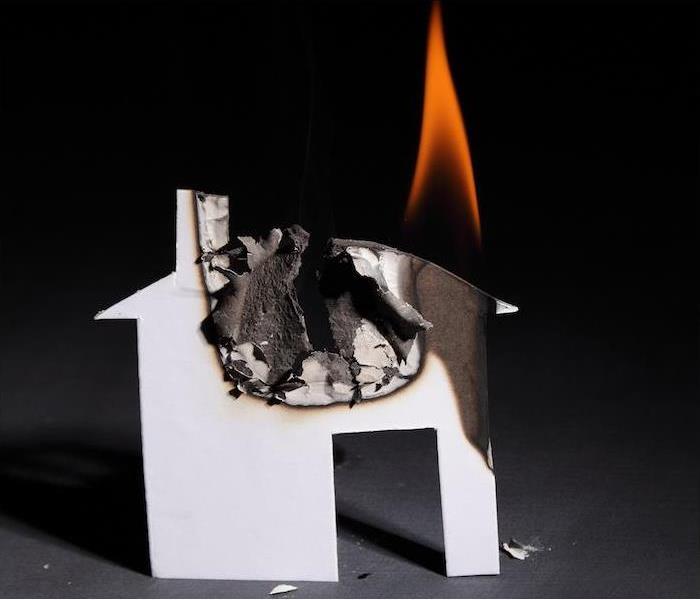Every Fire Has These 4 Things in Common | SERVPRO® of West Milwaukee
1/30/2022 (Permalink)
 If your home or business has any damage, SERVPRO of West Milwaukee is ready around the clock to help you recover.
If your home or business has any damage, SERVPRO of West Milwaukee is ready around the clock to help you recover.
All kinds of scenarios result in fires, and of course, all kinds of materials catch fire—homes, forests, even the occasional tire factory. And while all these fires may start under varying circumstances, they all have the same origins.
It’s a little confusing, but that’s where the fire tetrahedron comes in.
See, the study of fire by the scientific community led to the realization that all fires have the same four elements present, and without all four of these happening simultaneously, no fire can start or survive. Ready to learn? Great.
<h34-things-a-fire-needs-to-live">The 4 Things a Fire Needs to Live
Fuel. This is the thing a fire devours. It may start out as one thing—a leaf, a napkin, etc.—but the fuel source can change as a fire spreads and finds new things to destroy.
Heat. Whatever burns has to first combust, and anything that combusts has to reach a certain temperature. That temperature varies from object to object and material to material, but anything that catches fire has a flash point.
Oxygen. Fires not only consume fuel, they consume oxygen—or more accurately, they convert it to carbon dioxide and carbon monoxide.
Chemical Chain Reaction. The chain reaction among the other three elements is a crucial component of the fire tetrahedron, because in order for a fire to live, these things don’t only have to *happen*—they have to happen repeatedly.
The 4 Ways to Stop a Fire
Cool it. Fires can be stopped using the inverse principles of their building blocks—so, for example, cooling off a fire’s fuel source brings thermal balance, which causes the fuel to fall below its combustion threshold. This is why dumping water on fires is so effective.
Smother it. The oxygen a fire consumes is crucial to the combustion cycle, so covering a fire with something that keeps it from gaining access to more oxygen keeps a fire from growing and kills it quickly.
Starve it. In order for fire to continue, it has to either spread from its original fuel source or be able to dig deeper into its fuel source, to consume more of it. For this reason, if a fire runs out of fuel for any reason, it dies.
Interrupt the chain reaction. Class C fires—ones which involve electricity—need a different kind of solution than water. That’s where halon gases and other chemicals can come into play, because they can chemically trip up the continual reaction that has to occur for fires to live. These gases can stop any fire, but they’re particularly useful where electricity is involved.
If the fire tetrahedron makes a wreck of your home or business, we’re ready around the clock to help you recover. Contact SERVPRO anytime for fast, thorough cleanup and recovery after a fire.

 24/7 Emergency Service
24/7 Emergency Service